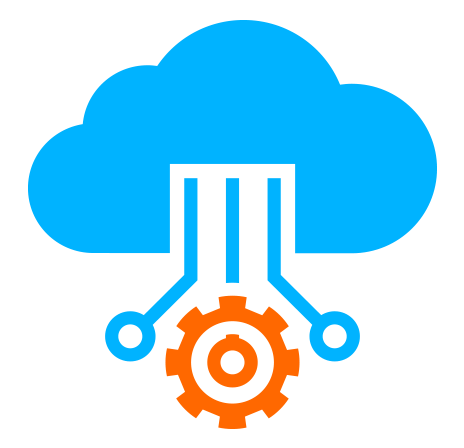 Server
Colocation
Server
Colocation
 CDN
Network
CDN
Network
 Linux Cloud
Hosting
Linux Cloud
Hosting
 VMware Public
Cloud
VMware Public
Cloud
 Multi-Cloud
Hosting
Multi-Cloud
Hosting
 Cloud
Server Hosting
Cloud
Server Hosting
 Kubernetes
Kubernetes
 API Gateway
API Gateway

We’re generating data at a mind‑blowing pace. According to IDC, the global datasphere is expected to reach 200 zettabytes by 2025. That’s trillions of gigabytes—photos, documents, logs, IoT telemetry, backups, analytics, and more. And much of this data now lives in the Cloud. No longer confined to local servers, organizations need scalable access and robust security to make sense of it all.
But here’s the catch: while cloud storage promises flexibility and convenience, many still underestimate its costs. Pay-per-GB pricing is just the starting point. Real-world cloud storage price depends on storage class, data access frequency, egress, encryption, integration, and compliance needs.
In this detailed guide, we’ll help you understand:
How different storage tiers impact your bill
What drives cost beyond raw capacity
Price comparisons among leading providers
A sample breakdown for personal and enterprise cases
Practical strategies to keep cloud storage affordable while secure
Pricing hinges on how often you need to access data. Here are the typical tiers:
Hot (or Standard) Storage
Offers immediate, low-latency access
For databases, active docs, websites, frequent backups
Costs ~₹4–6/GB per month
Cool (Infrequently Accessed)
A bit slower and cheaper, with access fees
Ideal for quarterly reports, archives
Costs ~₹2.5–4/GB per month
Cold / Archive
Cheapest storage, but retrieval takes hours–days
Suited for long-term compliance or backup retention
Pricing ~₹0.75–2/GB per month
Tiering lets you optimize cost—store rarely‑used data in cold storage, keep hot storage reserved for active workloads.
Capacity is rarely the largest driver of cloud storage costs. These factors matter too:
Most providers include free inbound transfers, but outbound data comes at a cost:
AWS S3: ~$0.05/GB
Google Cloud Storage & Azure: ₹5–10/GB
If you're moving or sharing large datasets, egress quickly becomes a major expense.
Frequent read/write/delete operations generate per‑request fees:
S3, GCS, Azure all charge based on number and type of operations
High‑frequency workloads can push this into hundreds per month
Replicating data across regions for failover or compliance duplicates costs. If you store 1 TB in two regions, you’re paying twice—as well as additional transfer fees between regions.
Basic at-rest encryption is often included, but customer-managed keys (CMKs), HSM-backed encryption, and audit trails come at extra cost.
Advanced enterprise features—like WORM retention (write once, read many), private networks, multi-zone redundancy, and extensive auditing—often add 10–30% to storage costs, or require higher service tiers.
When you integrate storage with servers (e.g., hosting or GPU servers), or use hybrid setups (on-prem + cloud), bandwidth, integration, and management costs can add up—but also help reduce long-term TCO.
|
Provider |
Hot/Standard |
Cool/Infrequent |
Cold/Archive |
Egress Cost |
|
AWS S3 |
₹4.1/GB/month |
₹2.5/GB/month |
₹0.75/GB/month (Glacier Deep) |
₹5–7/GB (tiered) |
|
Google Cloud |
₹4.0/GB/month |
₹2.6/GB/month (Nearline) |
₹0.8/GB/month (Archive) |
₹5–8/GB |
|
Azure Blob Storage |
₹4.5/GB/month |
₹3.0/GB/month |
₹1.0/GB/month (Archive) |
₹6–9/GB |
|
Backblaze B2 |
₹4.5/GB/month |
Same storage, free API & egress up to 3× storage |
₹1.00/GB beyond free limit |
Tip: Backblaze is often 2–5× cheaper in egress than big cloud providers, making it appealing for backups or data sharing at scale.
1 TB photos/videos
Occasional streaming, backups
Mostly hot storage, minimal egress
Estimated monthly cost:
1 TB × ₹4/GB = ₹4,000/month
Egress (say, 100 GB) × ₹5 = ₹500
Total ~₹4,500/month
This is similar to Dropbox/Google One pricing but with enterprise‑grade access and security.
50 TB active data (hot)
200 TB backups (cool)
1 PB archival (cold)
5 TB/month outbound
Region replication and monthly snapshot snapshots
Estimate:
Hot: 50 TB × ₹4 = ₹200,000
Cool: 200 TB × ₹2.6 = ₹520,000
Cold: 1 PB × ₹0.8 = ₹800,000
Egress: 5 TB × ₹6 = ₹30,000
Replication + snapshots + API ops + SLA add ~20%: ₹310,000
Total ₹1.86 million/month (₹22 million/year)
Without cost optimization (pure hot storage), this setup could easily run into ₹3 million/month.
Use lifecycle rules to transition older data to cooler tiers (e.g., after 30 days to cool, after 180 days to archive) to save massively over time.
Backups or archives benefit greatly—deduplicated/compressed data reduces both storage and egress charges.
Store seldom-accessed archives in Glacier or Archive tiers. Yes, retrieval is slower—but 10× cheaper.
Bundle outbound transfers or schedule them during off-peak times (if your provider has tiered egress pricing).
Scale matters—Backblaze B2 is ideal for large archival volumes or backups; AWS, GCS, or Azure serve performance-heavy, globally distributed apps with rich features.
Need compute + storage? Hybrid setups combine cloud servers (hosting) with scalable storage:
AWS EC2 + S3
GCP VM + Cloud Storage
Azure VM + Blob
Or custom setup: GPU/AI servers + Cloud storage via Cyfuture Cloud
Benefits include:
Autoscaling compute with elastic storage
Unified billing and APIs
Data proximity between compute and storage to reduce egress
Comprehensive backups and HA infrastructure
Digitally-forwarded businesses and personal users alike must understand that cloud storage price is more than ₹/GB/month—it includes access tiers, bandwidth, security, compliance, and integration costs. Being informed and strategic in tier selection, egress management, and provider choice lets you scale responsibly and affordably.
Personal users: expect ₹200–5,000/month for up to 1 TB
Small businesses: balance hot and cold data—use lifecycle rules
Enterprises: tier strategically and evaluate lower‑cost providers for backups
Hybrid environments: integrate compute and storage to cut down on transfers and simplify operations
As your infrastructure demands grow, cloud storage + hosting models like those offered by Cyfuture Cloud provide scalable, secure, and budget-aligned environments—so you only pay for what you need, where you need it.

Let’s talk about the future, and make it happen!
By continuing to use and navigate this website, you are agreeing to the use of cookies.
Find out more


